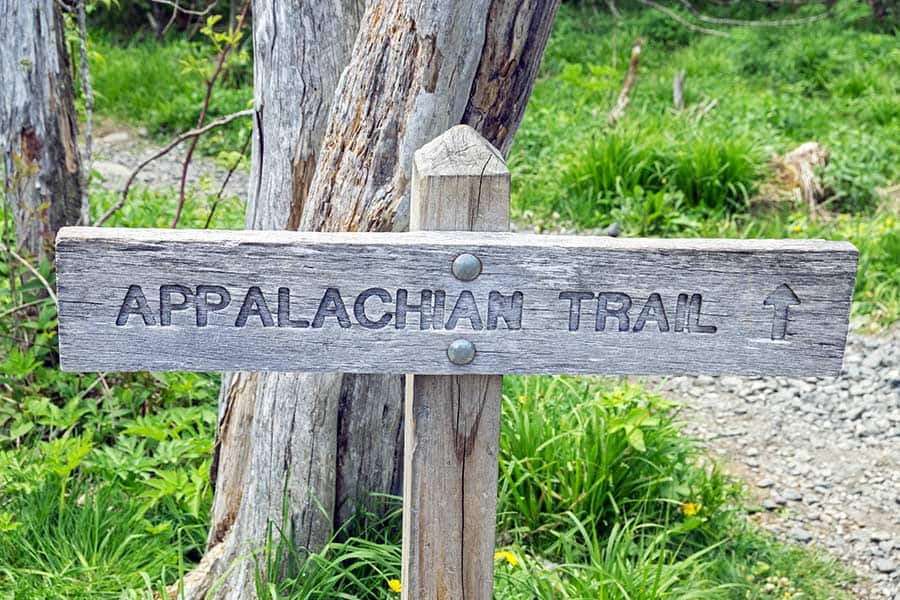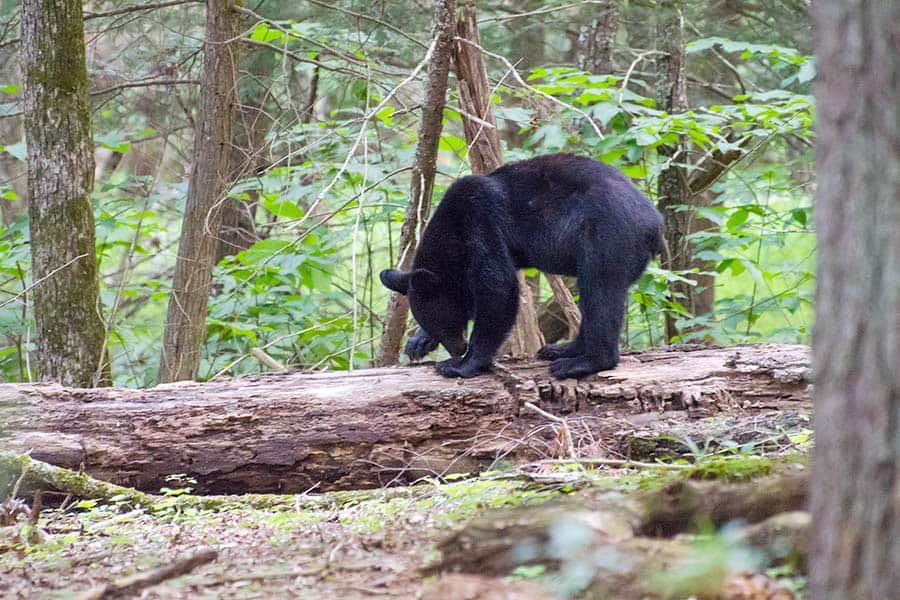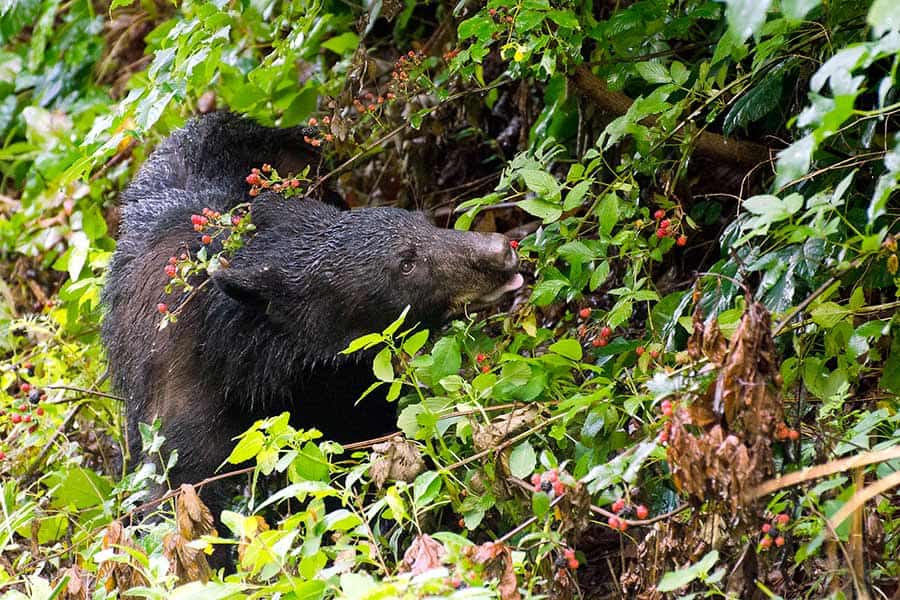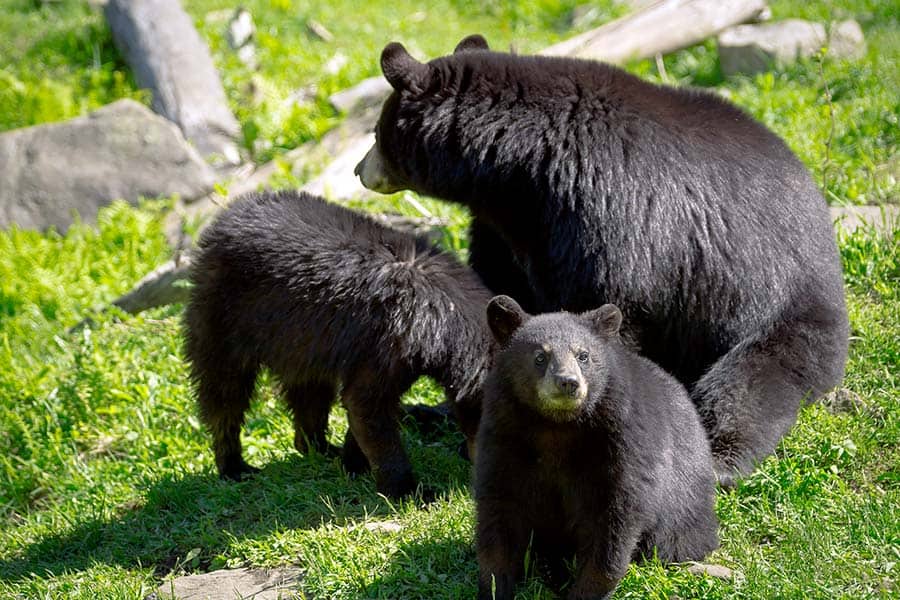
The Appalachian Trail, also called the A.T., is a National Scenic Trail that stretches from Georgia to Maine. It’s 2,190 miles long, and it has been the subject of countless books, documentaries, and movies. As the longest hiking-only trail in the world, there are plenty of animals along this historic route. So can you encounter bears on the Appalachian Trail?
Black bears are found on most parts of the Appalachian Trail. The areas with the highest bear populations are Shenandoah National Park in Virginia, Great Smoky Mountains National Park on the border of Tennessee and North Carolina, and the section of the trail in New Jersey.
If you’re interested in hiking the Appalachian Trail but are worried about bears, read on. By the end of this post, you’ll know what kind of bears are on the A.T., how to avoid bears, and what to do if you see one.
Bears on the Appalachian Trail
The Appalachian Trail stretches across 14 different states. There are frequently hikers that journey along the entire trail, referred to as thru-hiking. There are about 3 million people that visit the trail each year, but only 3,000 of them attempt a thru-hike.
The terrain of the A.T. is diverse. There are many elevation changes, ranging from rolling mountains to flat valleys. The elevation gain/loss throughout the entire trail is over 515,000 feet, which is like hiking Mount Everest 16 times!
The trail also passes through swamps, forests of pine trees, and over mountaintops. However, the majority of the trail is mountainous and wooded, which makes it bear country.

Whether you want to hike all 2,190 miles of the Appalachian Trail or just hike a section of it, it’s essential to know how to recognize signs of black bears. When hiking the A.T., you very well might come across bears because you are visiting the place they live and roam.
If you know what to do, sighting a bear can be an exciting, not life-threatening event. Even though bears tend to avoid humans, it’s essential to be aware of them while hiking the Appalachian Trail. There are a couple of things you can do to help reduce your chances of an encounter with a bear.
One thing you can do is make lots of noise as you hike. Making noise will help to alert any bears of your presence before they have a chance to see you, which usually leads to them leaving the area. Sometimes when bears attack it’s because they are scared or startled.
Another thing you can do on the A.T. is to hike in groups. Groups are louder and have stronger smells than small groups of hikers. Also, larger groups will help you keep bears away from you by alerting them before you see them. If you’re not traveling with a large group, try talking loudly every once in a while to scare any bears that are nearby.
How you prepare and store your food is an essential step in avoiding bears on the Appalachian Trail. You should prepare and eat your food at least 200 feet away from where you will sleep. You should also either hang your food or place it in bear canisters during a trip to the Appalachian Trail.
Many negative experiences with bears happen because people have fed bears in the past, and now they have become used to receiving food from humans. A bear that has been fed in the past is more likely to attack hikers for their food.
Part of being a responsible hiker on the Appalachian Trail is diligently cooking and storing your food correctly to prevent bear interactions.
One common misconception is that campfires keep bears away, don’t rely on this method to deter bears. On the contrary, in many situations, it may bring them closer.
There are an estimated 725 black bears along the entire length of the Appalachian Trail. That means there’s an average of one bear for every fifteen miles! So while most people will never see a bear while hiking through these woods, it’s essential to take steps, like the ones listed above, to prevent a bear encounter on the Appalachian Trail.
Check out these five items to help you have a better camping experience:
- Biodegradable Liquid Soap
- Microfiber Towels
- 300W Power Inverter
- Battery Operated Fan
- Square Pie Iron
Van Camping Life Tip: If you are only hiking a section of the Appalachian Trail and have a van, try to prepare all your meals at your van and store the food you don’t need on the hike in your van. Doing this will prevent the likelihood of a bear interaction.
How Common Are Bear Attacks on the Appalachian Trail?
On average, there is a fatal bear attack on the Appalachian Trail once every 8-10 years. However, since 2000, there have only been two reports of deadly bear attacks on the Appalachian Trail.
However, recently hikers have reported aggressive bears in a Tennessee section of the trail. These reports caused a closure of shelters and campsites in that area, though it is still open for hiking.
Before heading out for a hike on the Appalachian Trail, check the trail updates for the part of the trail you will be on for the day. Trail updates are real-time updates from hikers on the ground. In addition, all hikers are encouraged to report bear sightings on the trail updates page so other travelers can be aware.
Another precautionary measure you can take is to have a canister of bear spray with you while hiking the trail.

With bears, it’s important to remember they typically eat things like berries, insects, mice, and sometimes an animal that’s already dead–they are not hunters of large prey. So if you see a bear, most likely it will be curious, but not aggressive.
It’s important to make yourself look bigger by getting to higher ground or waving your arms and talking in a calm, loud, firm voice to let the bear know you are not prey. Then, slowly back away or to the side as you face the bear.
Other Posts of Interest
- Is Dawn Dish Soap Safe For Camping?
- Why Are Camping Lights Red?
- 20 Ways to Repel Bugs When Camping
- Can You Pitch A Tent On Gravel?
Are There Grizzly Bears on The Appalachian Trail?
There aren’t grizzly bears on the Appalachian Trail. Black bears are the only species of bear found on the Appalachian Trail. Though these bears are smaller than brown bears, they can still weigh anywhere from 100 to 400 pounds. While they may seem scary, black bears are pretty shy and usually avoid humans. If black bears are aggressive, it’s generally as a last resort.
Don’t be afraid if you happen to see a bear on the Appalachian Trail. If they realize you are human and not some sort of prey, they will probably retreat out of the area. Bears are animals, and when around humans, they are typically just as curious as we are of them. Therefore, most bear encounters on the Appalachian Trail will result in nothing more than a sighting.

The black bear population near the Appalachian trail has doubled in the last 20 years. Experts are currently tracking their movements to understand what’s bringing them closer to human populations. One of the main problems is that black bears have access to unsecured trashcans, which leads to a quick, easy meal.
When bears become comfortable around humans, they can often be destructive and aggressive. A black bear encounter can be a frightening experience, but you can help prevent them from happening with some common sense tips. As mentioned above, hiking in groups, being aware of your surroundings, and correctly storing your food will go a long way in preventing any negative interactions with bears on the A.T.
Do I Need a Bear Canister on the Appalachian Trail?
Bear canisters are strongly encouraged on the Appalachian Trail and even required on some sections—from the Jarrard Gap (point 26.7) to the Neel Gap (point 31.7) between 1 March-1 June each year.
A bear canister is a solid, airtight container made to withstand extreme force (like a blow from a bear). The containers are used to seal in the food and keep bears from being able to get it.
These canisters are then wedged against a rock or a log or between tree roots during the night. Though these containers are heavier than bags created for hanging food, they are much more effective as bears have been known to get hanging food down from trees.
Some locations have bear canister lending programs available if you don’t have a bear canister. Another option on the Appalachian Trail is to rent a bear canister to use for your trip.
A bear canister is a smart investment that will keep you safer from curious bears that weigh hundreds of pounds.
What Time of Day Are Bears Most Active?
Bears are most active at dawn and dusk. These can be dangerous times to hike not only because bears are more active but also because they are harder to see. Hiking in the daylight hours is a simple solution so you can avoid bears when they are most active.
A Hiker’s Stewardship of Appalachia and its Inhabitants
Hikers that enjoy the beautiful Appalacian Trail have a responsibility to care for the trail and its surrounding area by not feeding bears, cleaning and disposing of trash, and properly storing food.
A natural consequence of taking care of the land will be taking care of the bears. Bears are dangerous when they connect humans to easily accessible food. Bears often become reliant on humans for food, which leads to most attacks. Respecting the land and its wildlife will lead to healthier relationships between bears and hikers.






